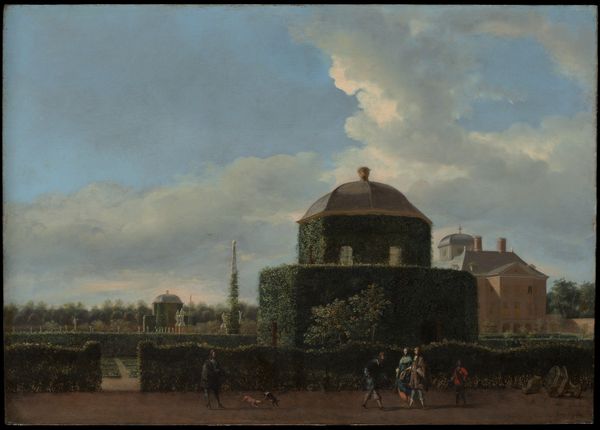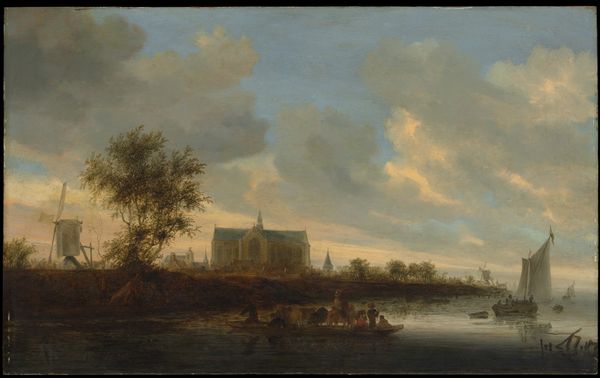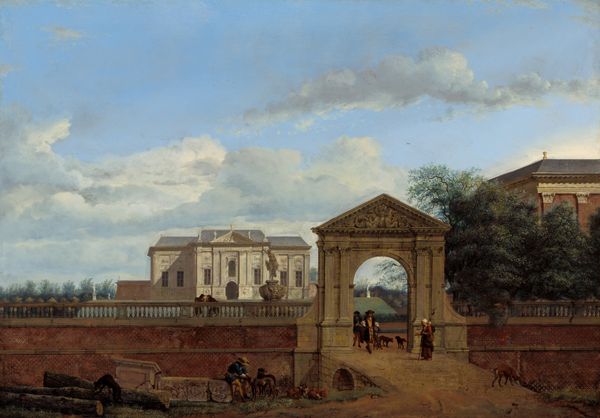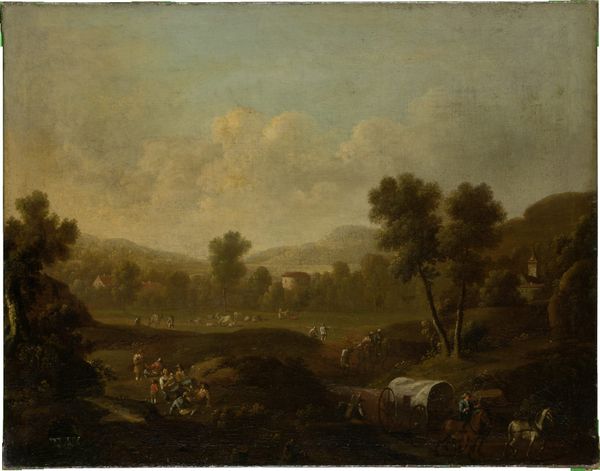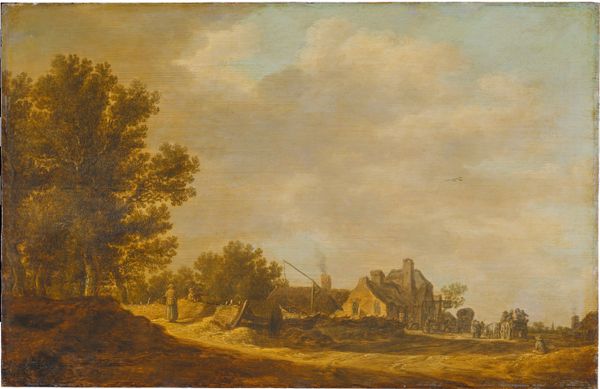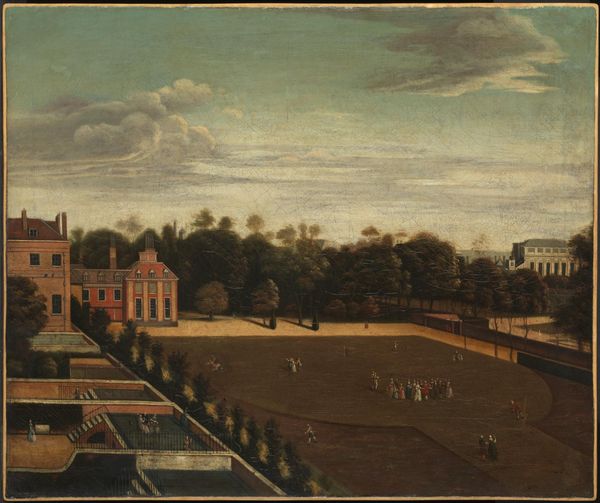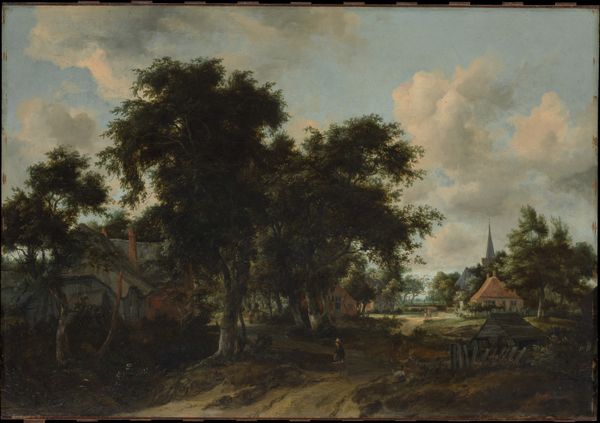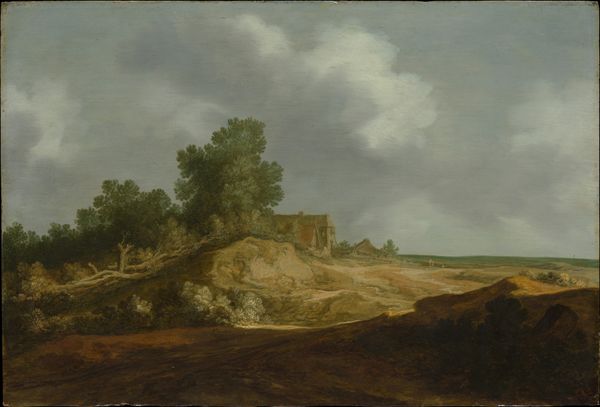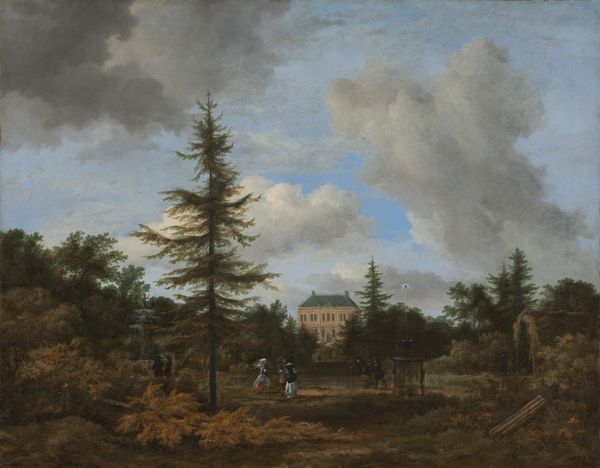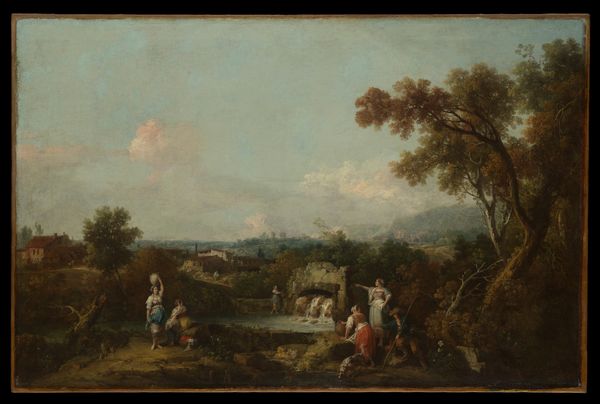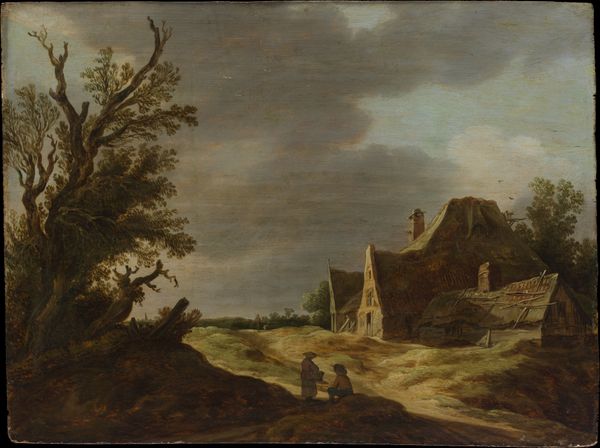
The Huis ten Bosch at The Hague and Its Formal Garden (View from the South) 1668 - 1670
0:00
0:00
painting, oil-paint
#
garden
#
baroque
#
dutch-golden-age
#
painting
#
oil-paint
#
landscape
#
house
#
perspective
#
oil painting
#
cityscape
#
genre-painting
#
realism
Dimensions: 15 3/8 x 21 3/4 in. (39.1 x 55.2 cm)
Copyright: Public Domain
Editor: Jan van der Heyden's "The Huis ten Bosch at The Hague and Its Formal Garden," painted between 1668 and 1670, showcases such intricate detail with oil on canvas. It has a detached and serene quality; what strikes you as significant in this depiction? Curator: It’s the relationship between the house and the garden itself that intrigues me. Look closely. How does the artist utilize perspective? It almost feels… staged, doesn’t it? Like a theater set where the formal garden serves as the stage. Editor: Yes, I see what you mean! The strong lines lead the eye directly to the house, like it's the main event. Is this "staging," as you called it, meant to tell us something? Curator: I believe so. During the Dutch Golden Age, houses weren’t simply dwellings; they represented status, order, and control over the environment. Van der Heyden meticulously captures every detail to emphasize Dutch power and prosperity. Even the statues seem to guard the threshold to this inner world of riches, don't you think? Editor: Definitely. And the garden being so geometric reinforces the idea of control and order. Curator: Precisely! Consider how this controlled space contrasts with nature's wildness, acting almost as a barrier against chaos, right? But it's also about continuity. Editor: What do you mean by "continuity"? Curator: Images of the House appear on Delftware tiles, tapestries and even printed ephemera like maps and books from this era. So this symbolic projection isn't limited to paintings. Editor: Wow, I never considered how powerful of a status symbol that home was during that era, let alone a means of establishing a continuous image. Thanks for opening my eyes to all the symbolism! Curator: My pleasure! Discovering the meaning embedded within familiar images is so rewarding.
Comments
No comments
Be the first to comment and join the conversation on the ultimate creative platform.
